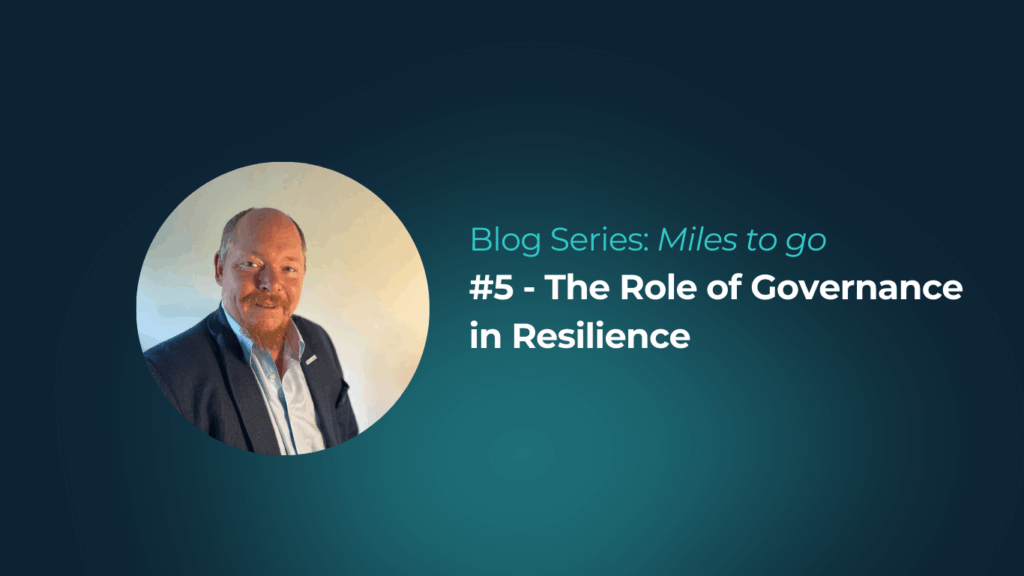Author: Owen Miles, VP Solutions Engineering EMEA for Restrata
Blog Series: ‘Miles to Go’ – Exploring the foundations of resilience & continuity
#5 – The Role of Governance in Resilience

Resilience isn’t just built in operations—it’s shaped in the boardroom. And one of the most overlooked drivers of resilience is governance.
I’ve worked with organizations that had strong plans, capable teams, and solid technology—but no clear ownership. No cross-functional oversight. No accountability for keeping resilience alive. The result? Drift. Duplication. And a strategy that looks good on paper but struggles in practice.
The most resilient organizations I’ve worked with treat governance as a core capability. They don’t just assign responsibility—they embed it.
1. Ownership Drives Action
Resilience needs a home. Not just a department, but a structure that ensures coordination, accountability, and momentum.
I’ve seen organizations where resilience is owned by security, IT, or compliance. That works—until the crisis spans departments. Then the gaps show. The most effective models involve cross-functional governance: operations, HR, legal, finance, and leadership all at the table.
Because resilience isn’t a silo—it’s a system.
2. Governance Enables Consistency
Without governance, resilience becomes fragmented. One team runs simulations. Another updates plans. A third manages technology. But no one connects the dots.
Governance creates alignment. It ensures that plans are integrated, systems are interoperable, and decisions are coordinated. It also ensures that lessons learned are shared—not just locally, but across the business.
3. Leadership Sets the Tone
Governance isn’t just about structure—it’s about sponsorship. When senior leaders champion resilience, it becomes strategic. It gets funded. It gets prioritized. It gets embedded.
I’ve seen organizations transform their posture simply because a board member asked, “Are we ready?” That question triggered investment, engagement, and change. Because when leadership leads, resilience follows.
4. Governance Must Be Active
A governance framework that meets once a year isn’t governance—it’s ceremony. The most resilient organizations treat governance as a living process. They meet regularly. They review metrics. They challenge assumptions. They adapt.
They also empower local leaders. Governance isn’t just top-down—it’s distributed. It enables autonomy, supports escalation, and ensures that decisions can be made quickly, confidently, and consistently.
Because resilience isn’t just about having a plan. It’s about having the structure to keep it alive.
Call to Action: Review your governance model. Is resilience owned, coordinated, and supported across the business? If not, start building the structure that makes resilience sustainable.
Next Week: We’ll uncover the hidden costs of shallow continuity—and why surface-level planning can quietly sabotage your resilience.
